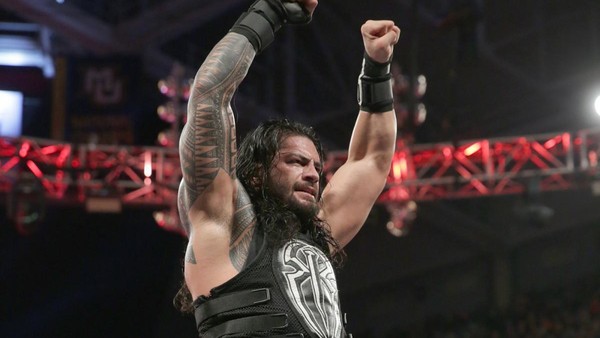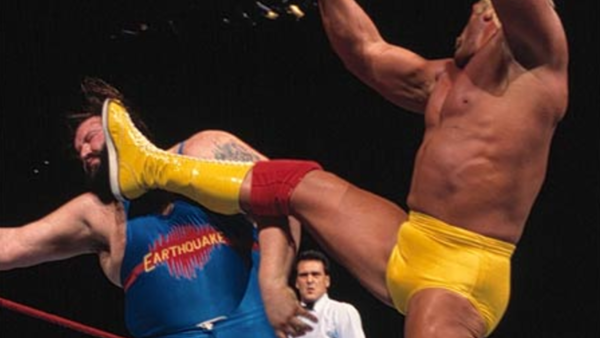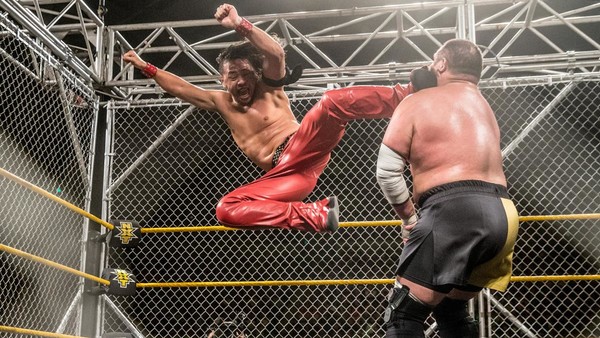Is WWE Completely Detached From The Audience?
Is Vince McMahon really an autocratic troll?

The 2015 Royal Rumble Match was a borderline satirical wrestling message board punchline.
The Big Show and Kane, two men who had worn out their welcome to such an extent that the former was the victim of “Please retire!” chants, were positioned, with a knowing postmodern slant, as monstrous manifestations of Vince McMahon’s antiquated approach. They casually mauled and tossed out the likes of Dolph Ziggler, Bray Wyatt and Dean Ambrose - men with a varying but tangible respect from the so-called vocal adult audience. By the end, just Roman Reigns was left. It was a calculated attempt to portray the pet project in a comparatively flattering light. But WWE got the numbers all wrong. It mattered little to the audience that Reigns wasn’t quite as overexposed or as unpopular as Show and Kane. He was still Roman Reigns, manufactured hero, symbol of oppression.
WWE knew that the scope for rejection was vast. The company made sure to get Daniel Bryan out of the way early, lest a protracted appearance instil them with too much hope. It also drafted in The Rock to endorse Reigns at the event’s conclusion. The two distant relatives teamed up to vanquish Show and Kane, but positioning them side by side just invited unflattering comparison. Reigns went on to WrestleMania, lost, and enjoyed a carefully played 2015 in which he generated a degree of audience goodwill in feuds with Big Show and Bray Wyatt. When it became apparent that he was still going to be the man, that good will disintegrated.
We are still deep in the agonising throes of Roman’s Reign, two years later. WWE attempted a similar damage limitation exercise in the 2017 Royal Rumble Match - but they subverted the formula. Reigns was positioned as a pseudo heel purely to make Randy Orton’s win more palatable to the San Antonio crowd. Reigns was there to set up his WrestleMania match against the Undertaker, and obscure the fact that another stale headline act was set to receive his umpteenth shot at major show prestige. The positioning of Reigns in the now-doomed number thirty slot wasn’t as tone deaf as it may appeared. It was more like WWE were sticking their fingers in their ears.

WWE had yet another plan to generate sympathy for Roman Reigns: by having him meet the challenge of Braun Strowman, the monster among men. Strowman had been booked as unbeatable in the preceding months. Countless jobbers, Sami Zayn - even the Big Show were sacrificed to build his mystique. Gorilla Monsoon was no longer around to call it, but it was the irresistible force meeting the immovable object. It was the most enduring trope WWE had. It was Hulk Hogan Vs. Earthquake recycled for a generation who had never seen it. When Reigns defeated Strowman, cleanly, in 17:13, it was felt that those months had been wasted. The Strowman act had caught on.
But were they?
The WWE audience is fragmented. This much has been evident for years, with the booming “Let’s Go Cena/Cena sucks!” dual chant an audible representation of the split. In one corner, there is the lucrative family market - the portion of the fanbase more likely to spend money at the merchandise table, the portion of the audience the company is more capable of conditioning. In the opposite corner stands the vocal adult males - the portion of the fanbase who might not like the taste of what is put in front of them, but digest it regardless. Ratings aren’t what they were, not that they remain a reliable metric, but those same fans booed John Cena out of every building, too. They’ve clearly stuck around for a decade. It’s equally clear that they aren’t going anywhere. Reigns Vs. Strowman wasn’t for them. Roman Reigns gets booed out every building he wrestles in, but he is comfortably in the top five bracket of merchandise shifters. He does have a fanbase; you just can’t really hear them.
In the last few years, WWE has adopted a new strategy in an attempt to appeal to every pocket of the wrestling fandom. Those fans - and contrary to WWE’s public rhetoric, they are legion - no longer need to accept Reigns as the Big Dog to enjoy the product.

Wrestling is a cyclical business; in persisting with the Reigns push, McMahon is simply oiling the machine, ensuring that the major component of it remains functional and intuitive enough for the youngest and most fickle fans to grasp.
McMahon also seems to be persisting with Roman Reigns as company talisman because, more than ever, the role is becoming somewhat redundant. WWE no longer needs one figurehead to sustain business; in the Network Era, the company is diversifying its product to reflect its disparate audience.
For those who have grown out of Reigns’ simple sports entertainment comeback formula, WWE has at last catered to the wrestling fans by promoting the likes of Samoa Joe and AJ Styles with a rewarding and once-inconceivable conviction. Fans who for years have cried out for a return to old-school philosophies and a more manageable wrestling schedule have NXT. Lapsed, casual fans get their festival of nostalgia at WrestleMania. The recent United Kingdom Championship acted as both strong-arm display of defensive dominance and gauge of a global territory model geared towards the territorial.
Women are being given more reasons to watch. Ditto fans of puroresu, with the acquisitions of Hideo Itami and Shinsuke Nakamura, ditto fans who’ve never really cared for WWE in the first place. The Network collection of territory-era Hidden Gems is growing. WWE is catering for fans of flippy sh*t and Jim Cornette alike.
It’s hard to shake the image of Vince McMahon as an out-of-touch despot when he books Roman Reigns to say sufferin’ succotash and swat away his brand’s Tag Team Champions like flies - but nothing happens in his company without his say so, with the possible exception of Raven/Johnny Polo’s 2000 rehiring. Roman is front and centre of the flagship. It’s equally difficult not to see him as the face of the company - but while WWE underestimate the numbers of what B G James recently referred to on Twitter as an “antiestablishment minority”, WWE is slowly catering to them, on the margins if nothing else.

Fans of quicker and more athletic styles have been catered for with the Cruiserweight Classic and 205 Live. That’s the intention, at least. Most can agree that the latter show hasn’t worked - but furtive steps are being taken. The detachment is there, evidently. Alicia Fox has been pushed more than Lince Dorado. But the reconciliation is in progress, albeit very slowly. Not coincidentally, the acceleration struggles at about the same rate as McMahon acquiescing power to Triple H.
For those turned off by the scripted, sitcom repartee on the flagship shows, there’s Talking Smack - a loose and improvised platform on which for stars to reveal and project more of themselves. This is a stretch, admittedly. The inflexible moulds into which WWE talents are cast is largely to blame for the homogenised malaise - but this new approach is in its infancy. Talking Smack, a cult hit, may yet inform the content of the televised product. The Attitude Era didn’t start with Steve Austin Vs. McMahon and sudden proliferation of expletives and chair shots. It started with Steve Austin Vs. Brian Pillman and Shotgun Saturday Night.
WWE is experimenting with a new, something-for-everyone model. If you look hard enough, there is something on the Network for everybody. How better to ensure repeat subscriptions?
Is WWE entirely detached from its audience, as the Reigns experiment suggests? That audience is too fluid, too capricious, to appease with one universally-beloved attraction. Vince McMahon - and Triple H in particular - know exactly what they are doing. Vince just doesn’t care - or really, need to care - about what those who shout the loudest want.